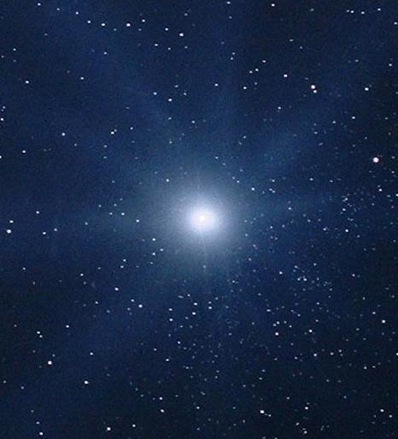


|

|
 |
|
Planets around white dwarfs? GEMMA LAVENDER ASTRONOMY NOW Posted: 18 April 2011 Astronomers are finding tantalising hints of planets around dead stars, it was revealed today at the Royal Astronomical Society’s National Astronomy Meeting in Llandudno, Wales. “We hit upon this idea of looking for planets around white dwarfs in a paper in 2002 by myself and colleagues,” says Dr. Matt Burleigh at the University of Leicester, who presented the latest results.  Do white dwarfs have planets? This question was discussed on Day 1 of the National Astronomy Meeting 2011. Image: NASA. When a dying star swells into a red giant and loses mass by ejecting its outer layers to leave behind a white dwarf, the orbits of any planets around the star (and which were not swallowed up by the red giant) will expand. It is this widening of orbits that improves our ability to detect them and allowed Burleigh and his colleagues to use direct imaging and spectroscopy to hunt for exoplanets around these stars, which are common in our solar neighbourhood. Burleigh, along with Fraser Clarke of Oxford University and Emma Hogan of the Gemini South Observatory, named the search for planets around white dwarfs the Degenerate Objects around Degenerate Objects Project, or DODO. Their strategy is to sample around 40 young white dwarfs within 65 light years. Deep, wide-field images in the near-infrared using Gemini and the Very Large Telescope in Chile were obtained where the common proper motion of companions is being analysed over one to three years in order to confirm if they are indeed orbiting the white dwarfs. DODO is sensitive to a few Jupiter masses. Any planetary companions that orbit white dwarfs are believed to be mature gas giants with temperatures between –73 and 327 degrees Celsius (200 to 600 kelvin) and ages of up to several billion years. In their hunt for planets around white dwarfs, the astronomers came across Gliese 3483, a system containing a white dwarf of 0.62 solar masses. Burleigh has noted that the star has a companion, but whether it is a planet or a brown dwarf still remains a mystery. The evidence for the companion being a planet is its mass, which is estimated to be between six and ten times the mass of Jupiter. This is too small for your typical brown dwarf and since the temperature is between 37 and 107 degrees Celsius (310–380 kelvin) it would be by far the the coldest brown dwarf ever found (see our recent news story for the current record holder). On the other hand, the companion’s distance from the star (2,500 times the distance between Earth and the Sun, which is 149.6 million kilometres or one astronomical unit) is too far from the star for it to be a planet. “Even if you work it backwards [shrinking, rather than widening the orbit], the original separation would have been around 700 astronomical units,” says Burleigh. Even this distance is too far for the formation of a planet. However, there is a caveat to this, says Burleigh.“It’s perfectly possible that the object formed closer and was thrown out or is on a highly eccentric orbit,” he says. The question as to whether the white dwarf is a brown dwarf or planet is still up for debate. |
|
|
|
|